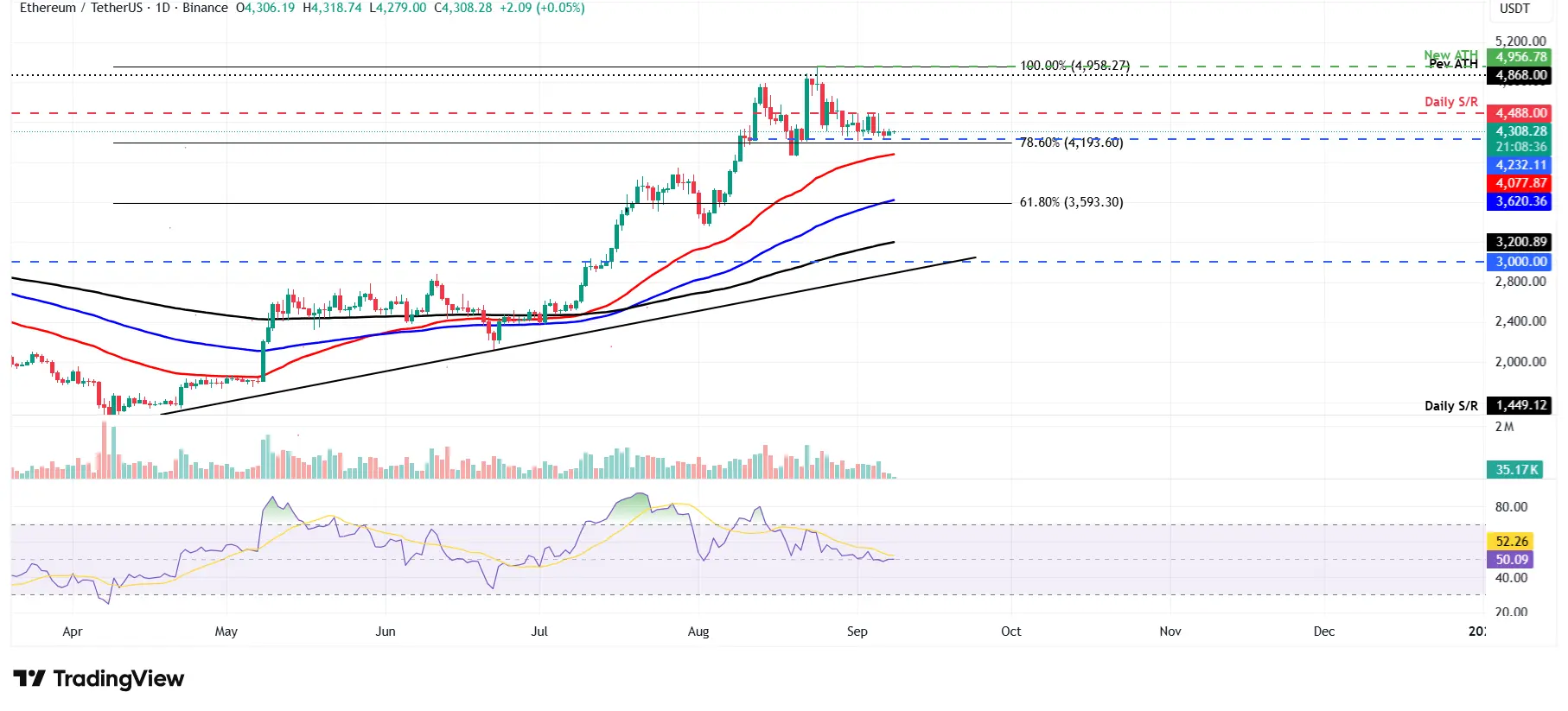Key Highlights:
- Metalpha offloaded over $49 million worth of Ethereum to Binance today.
- The move sparked fears of a sell-off amid the recent ETF outflow saga.
- In addition, the ETH price has been consolidating, raising further concerns in the market.
One of the largest wallets associated with Metalpha has transferred a major portion of its Ethereum holdings to Binance, sparking speculation about whether this could create selling pressure in the market. According to Arkham Intelligence data, the wallet withdrew 11,500 ETH, worth approximately $49.34 million, from the lending platform Aave and deposited the full amount to the exchange.
This is not the only large deal associated with the company in recent months. In June 2025, Metalpha withdrew 18,000 ETH on Binance, which is approximately equivalent to $48.5 million at the time, hinting at a possible continuation of the large-volume repositioning trend. The question market watchers are asking now is whether the transfers may also be a precursor to additional volatility in the Ethereum price trajectory.
A wallet related to #Metalpha just withdrew 11,500 $ETH($49.34M) from #Aave and deposited it into #Binance.https://t.co/ya7pvQcnuH pic.twitter.com/4pqn4Vax61
— Lookonchain (@lookonchain) September 8, 2025
The recent transfer of Metalpha has acquired a special interest due to its magnitude and timing. Transfers of tens of millions of dollars of ETH to a crypto exchange can, as a rule, provoke fears of a looming sell-off, although this may also be associated with hedging measures or liquidity management. Moreover, with spot Ethereum ETFs also facing major outflows, the situation could further complicate.
Ether ETF Flows Underline the Diverging Trends
The transition is set against a sharp imbalance in the exchange-traded funds (ETF) flows of digital assets. In the period of September 2 to September 5, the U.S.-listed spot Ethereum ETFs had net withdrawals amounting to $788 million, the most since their inception. None of the individual funds were able to draw in any new inflows in the period, highlighting investor apprehension.
Spot Bitcoin ETFs, in comparison, registered net inflows of $246 million in the same week, or the second consecutive week of positive net inflows. The trend that is moving away indicates the change in tastes of the investor, and Bitcoin is still appealing to the investors because Ethereum is experiencing growing uncertainty.
ETH Price Stalls in Narrow Band
This uncertainty has been reflected in the performance of Ethereum in the market. The token has been on a narrow band between $4,324 and 4488 for more than a week. On Monday, September 8, the ETH price stayed around the $4,300 mark, slightly higher than it had dropped the day before at the bottom of that range.

Technical signals are indicating sluggish direction. The relative strength index (RSI) in the daily chart has been moving around the neutral position of 50 over the past few sessions, indicating that both buyers and sellers have no clear direction.
There are two levels that analysts are monitoring in the days ahead. Provided that ETH can trade at a daily close above $4,488, it might trigger a new wave of bullishness and set the stage to re-test its all-time high of $4,956. On the other side, a drop of less than $4,232 would put the asset at a risk of even higher losses, and the 50-day exponential moving average of about $4,077 appears to be the next potential support level.
Institutional Participation Stands Firm Despite Outflows
Nonetheless, amid the negative flows, Ethereum continues to be a core holding in a number of corporate treasuries despite fluctuating ETF flows and short-term uncertainty. Statistics indicate that Bitmine Immersion Technologies manages the largest reserve valued at 1.87 million ETH, which is approximately $8.03 billion at the current rates. Closely behind SharpLink Gaming is 837,000 ETH, worth around $3.6 billion.
These holdings are indicative of long-term institutional belief in the long-term outlook of Ethereum, amidst short-term trading activity that is still unresolved. According to market participants, treasury strategies tend to diverge from retail sentiment, which is concerned with a multi-year horizon rather than short-term volatility.



